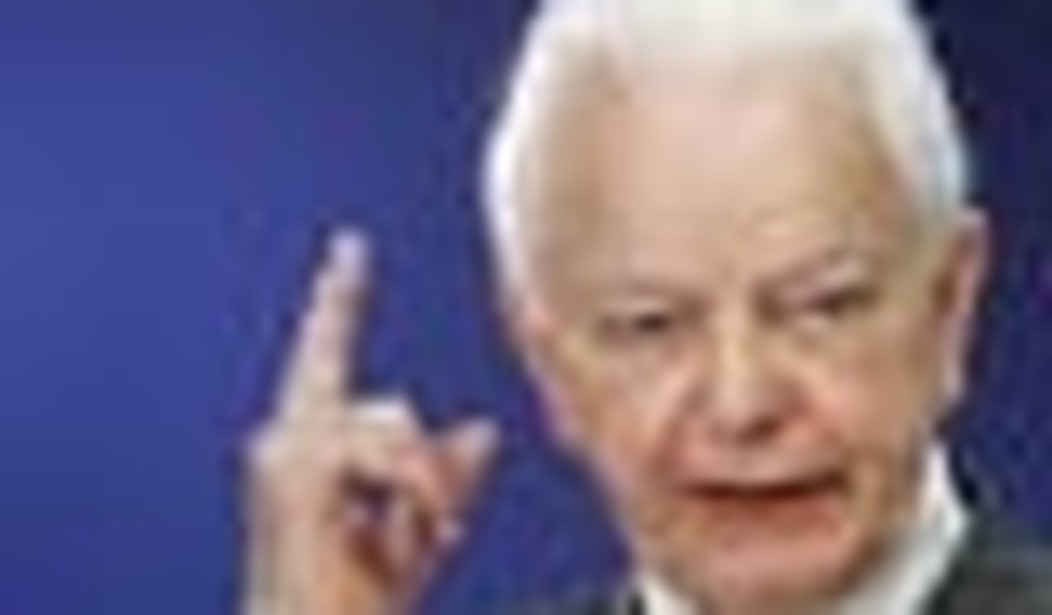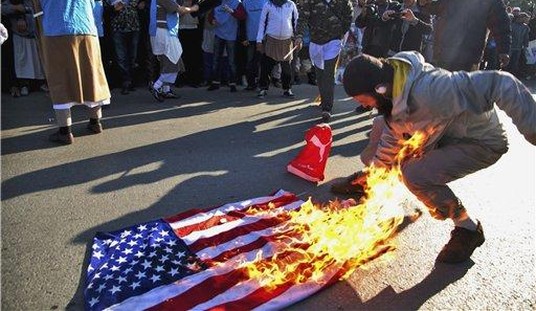History often repeats itself, and if you have lived two lives, as I have done, you may have a chance of seeing that reenactment with your own eyes. “Stealing from capitalists is our duty,” I repeatedly heard Nikita Khrushchev shout. “Don’t raise your eyebrows, Comrades. I intentionally used the word steal. We have a historical duty to steal from capitalists.”
“Stealing from capitalists is our historical duty,” I also often heard my former boss, Nicolae Ceausescu, shout as he banged the table with true Khrushchev-like fervor.
Both leaders rose to lead their countries without ever having earned a single penny in any productive job. Neither man had the slightest idea about what makes an economy work. And each sincerely believed that stealing from the rich was the magic wand that would cure all his country’s economic ills. Their vaunted “historical duty” was rooted in Marx’s Manifesto of the Communist Party, which urged its followers to “eradicate capitalism” by progressive income taxes and abolition of all rights of inheritance.
Last September, I could hardly believe my eyes. The president of the United States asked the extraordinary joint session of the U.S. Congress to impose an additional super-tax on “rich people.” In other words, to make “stealing from capitalists” an official policy of the United States, whose Declaration of Independence emphatically states that “all men are created equal.”
James Madison, author of the U.S. Constitution, must have turned over in his grave. He once wrote:
I cannot undertake to lay my finger on that article of the Constitution which granted a right to Congress of expending, on objects of benevolence, the money of their constituents.
Samuel Adams, one of the founding fathers of the United States, also clearly stated:
The utopian schemes of leveling [i.e., redistribution of wealth] … are arbitrary, despotic, and, in our government, unconstitutional.
That memorable day of September 8, 2011, when the U.S. president tried to legalize “stealing from capitalists,” marked the 835th day that the Democrat-controlled Senate had failed to pass a U.S. budget. Even a mom-and-pop grocery store has to have a budget to keep its business running. Stealing can hardly be budgeted, however.
The economic collapse of the Soviet Union dramatically proved that stealing does not pay, even if it is committed by the government of a superpower. The Democratic Party’s reliance on redistributing America’s wealth instead of encouraging the production of wealth generated economic collapse as well. The GDP fell from 4.5% to 1.3%.
In my experience, the redistribution of wealth has always been presented as needed to help the poor, but it has usually been used by politicians to buy the votes they need to transform their electoral district or even their country into monuments to themselves.
Lenin pretended that Russia was poor because its wealth was monopolized by its privileged class, and he was able to gather millions behind his flag by promising to redistribute the country’s wealth. Stealing became, indeed, a national policy on the day the Soviet Union was born. After the 1917 revolution, Lenin confiscated the imperial family’s wealth, seized the land owned by the rich Russians, and nationalized Russian industry, banking, and agriculture. By forcing the peasants into collective farms, the Kremlin stole their land, their animals, and their agricultural tools. Within a few years, the entire Soviet economy was running on stolen property managed by bureaucrats who had no clue about how to make their new country work. Some 10 million people died of starvation.
In the mid-1930s, the Communist Party itself became a target for theft. Following a brief period of collective leadership exercised by the Politburo, Stalin stole all the top-level positions in the country and pinned them onto his own chest like war decorations, thereby establishing a dismal new feudalism in the middle of the 20th century. That was exactly what later occurred in Eastern Europe after the Communists took over. When I left Romania, the list of the positions and titles accumulated by Ceausescu and his wife could have easily filled a small booklet.
Once settled in the saddle, Stalin began using the wealth stolen from the people to glorify himself and his political father. The city of Tsaritsyn was grandiosely rebuilt as Stalingrad, just as St. Petersburg was aggrandized as Leningrad to glorify Lenin. The embalmed body of Russia’s newest saint, Lenin, was put on display as a holy relic for adoration by the people in an imperial mausoleum.
In the mid 1930s, the statues and the portraits of Stalin began growing like mushrooms all over Russia, which became a monument to him personally. That was exactly what later occurred in Eastern Europe after the Communists took over. As one might expect in the Balkans, Ceausescu’s cult took on a gloriously Byzantine coloration. Almost every Romanian town acquired its Ceausescu boulevard, Ceausescu plaza, Ceausescu square, and before long the country’s industrial and agricultural organizations acquired similar names. “A man like me is born only once every five hundred years,” my former boss proclaimed over and over.
People everywhere love free lunches, and American politicians also began using the redistribution of wealth to promote themselves. Lyndon Johnson’s “Great Society,” built with America’s tax money, had the secret purpose of stitching together a pro-Democratic voting coalition needed to keep him in power. It accomplished its goal, but it shifted the U.S. budget into the red.
Lyndon Johnson opened a new American era, in which stealing tax money to build monuments to yourself has become a legal policy.
Over his long career in the U.S. Congress, the late Democratic Senator Robert Byrd was able to steal $3.3 billion, with a “b,” of tax money in order to build his West Virginia into a monument to himself. Several transportation projects named after him gained national notoriety. The Robert C. Byrd Highway, also known as the Appalachian Development Highway System, was dubbed “West Virginia’s road to nowhere” in 2009, after it received a $9.5 million earmark in the $410 billion Omnibus Appropriation Act and $21 million more from the American Recovery and Reinvestment Act of 2009. More than 50 buildings erected with tax money stolen by Senator Byrd are now named for him. Here are a few: Robert C. Byrd Community Center, Pine Grove, WV; Robert C. Byrd Federal Correction Institution, Hazelton, WV; Robert C. Byrd Visitor Center, Harpers Ferry National Historical Park, WV; Robert C. Byrd United States R Courthouse and Federal Building, Charleston, WV; Robert C. Byrd Academic and Technology Center, Marshall University in Huntington, WV; Robert C. Byrd Auditorium, National Conservation Center, WV; Robert C. Byrd Green Bank Telescope, Green Bank, WV; Robert C. Byrd Library, Wheeling, WV.
Documents obtained pursuant to a Freedom of Information Act request show that Nancy Pelosi, former speaker of the House and currently minority leader, also spent impressive amounts of money obtained from the redistribution of America’s wealth in order to promote herself. Traditionally, the House speaker has flown in a 12-seat Air Force jet. However Pelosi demanded and got a 200-seat C-32 — the military version of the Boeing 757 — because she wanted to take along as many of her voters as possible on her free trips. Pelosi’s air travel costs in 2009 and 2010 amounted to $2.2 million, out of which $101,429 was spent on food and alcohol used on board. Purchases for just one Pelosi-led trip in “her” C-32 included: Johnny Walker Red scotch, Grey Goose vodka, E&J brandy, Bailey’s Irish Crème, Maker’s Mark whiskey, Courvoisier cognac, Bacardi Light rum, Jim Beam whiskey, Beefeater gin, Dewar’s scotch, Bombay Sapphire gin, Jack Daniels whiskey, Corona beer, and several bottles of wine.
President Obama’s current redistribution of the country’s wealth caused the downgrading of the U.S. credit rating for the first time in our country’s history, but it helped the young president to start transforming the U.S. into a monument to himself. Below is just a partial list of projects and places already named after President Obama.
California: President Barack Obama Parkway, Orlando; Obama Way, Seaside; Barack Obama Charter School, Compton; Barack Obama Global Preparation Academy, Los Angeles; Barack Obama Academy, Oakland.
Florida: Barack Obama Avenue, Opa-loka; Barack Obama Boulevard, West Park.
Maryland: Barack Obama Elementary School, Upper Marlboro.
Missouri: Barack Obama Elementary School, Pine Lawn.
Minnesota: Barack and Michelle Obama Service Learning Elementary, Saint Paul.
New Jersey: Barack Obama Academy, Plainfield; Barack Obama Green Charter High School, Plainfield.
New York: Barack Obama Elementary School, Hempstead.
Pensylvania: Obama High School, Pittsburgh.
Texas: Barack Obama Male Leadership Academy, Dallas.
Thirty-three years ago I paid with two death sentences from my native Romania for helping her people to stop thinking of government as a boon bestowed from on high, and to take their lives into their own hands.
On November 9, 1989, as I watched the Berlin Wall being torn down, my eyes welled up with tears. I was incredibly proud to be a citizen of the United States. The whole world was expressing its gratitude to this great country for its 45 years of successful Cold War, the repercussions from which had brought down all those monuments the Kremlin and its viceroys had erected to themselves.
Nineteen years later, I was amused to watch on television as the young Democratic nominee for the White House proclaimed in so many words that he is the one the world is waiting for. And an indiscrete YouTube sequence published by FOX TV showed a picture of Communist idol Che Guevara hanging on the wall of Senator Obama’s campaign office in Houston.
On November 4, 2008, however, over 69 million Americans gave Senator Obama the White House, and gave his Democratic Party both chambers of the U.S. Congress.
A Rasmussen poll taken during those days showed that only 53% of Americans preferred capitalism to socialism; 27% were unsure, and 20% strongly opted for socialism.
Houston, we have a problem!









Join the conversation as a VIP Member